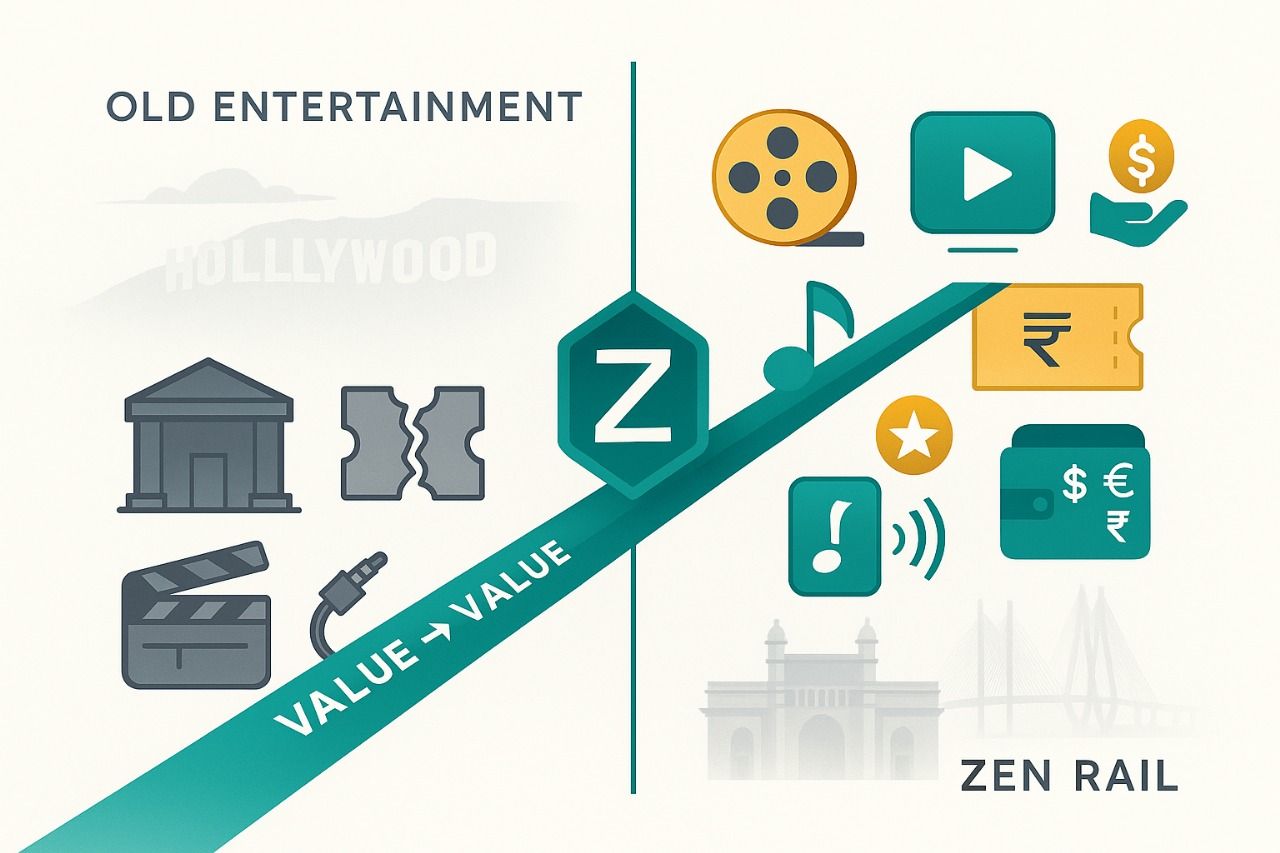
When it comes to characterizing the art of luxury branding, there is oh-so-very much to dive into. From the opulent adornments of Ancient Egypt to the rising popularity of decadent digital marketplaces, luxury is intimately and pervasively intertwined with human history—providing us with endless opportunities to discover.
But first, it’s worth visiting the identity of the elusive quality that we call luxury itself. The word comes from the Latin word luxuria which simply means ‘extravagance or excess’. However, while most tend to associate luxury goods with top-end price tags, there is so much more to the DNA of luxury than expense alone.
During his tenure with LVMH Group, Jean-Claude Biver poignantly remarked that “luxury is whatever money cannot buy.” His enigmatic words dropped a vital clue to the recipe for luxury branding success, while also highlighting the vital differences between marketing for conventional consumerism and forging an aspirational brand that can ultimately be elevated to luxury status.
While positioning for the luxury market can be tricky, many have achieved the feat—and there has never been a better time for those still aspiring to do so. Global revenue from luxury goods climbed to an unprecedented US$354.80bn in 2022 and further growth of 3.47% annually is predicted for the years ahead. With that in mind, today our goal is to delve into the fundamentals of luxury branding, exploring the tactics harnessed by those who do it best, so that they might be used as a map for following in the footsteps of those who have risen before us.
The Power of Symbolic Value
In her role as a globally recognized authority on brand meaning, Dr. Martina Olbert described the very essence of a luxury item as being “based on the inflation of its symbolic value over the functional value.” She reminds us that anything that is luxurious is a non-necessity, and its primary role is not problem-solving, but rather to create an experience that transcends the object itself.
Where other brands might place greater emphasis on tangible, solution-oriented, and user-friendly features, luxury branding instead calls for aspects such as quality, craftsmanship, and exemplary customer care to be accompanied by the intangible—a sense of rarity, exclusivity, heritage, legacy, status, innovation, and ultimately, the leveraging of both fantasy and imagination to weave exceptional and enduring customer journeys.
Crucially, the style of symbolic value cultivated by luxury brands may vary, but they do often share a core group of recognizable components. However, before we move on to what these are, there is another key factor to calculate into our precisely cultivated luxury branding equation.
The Importance of Differentiation
Turning to yet another striking difference between the way that big-name brands present to their audiences and the way that luxury brands do, we find the immeasurable contribution of differentiation. For most businesses, demonstrating superiority over the competition by actively encouraging comparison is a useful strategy. But, within the world of designer decadence, this tactic is seen as something to avoid. Instead, differentiation is prioritized and often taken to its extremes.
Moving far beyond differentiating the qualities of products themselves, veteran luxury brands strive to foster unique—and ideally incomparable—brand identities that become transcendent and sacred central tenets, capable of both steering and grounding their continuing evolution.
Iconic identifiers such as the red interiors of a Bentley, the red soles of Christian Louboutin’s shoes, and the repeated and interwoven “LV” monograms that have decorated Louis Vuitton handbags for more than a century, come to mind. These instantly recognizable signature facets of each brand’s makeup allow them to become part of our cultural fabric. This, in turn, inspires customer loyalty that is emotionally rooted and offers buyers the opportunity to shift their self-perception through ownership.
Identifying the Core Components of Luxury Branding
Undoubtedly, the arrival of the digital era has brought numerous challenges for those with a hold in the luxury market. These include an escalation in imitation and the complex shift from primarily meeting customers in curated luxury brand retail settings to presenting them with meaningful luxury shopping experiences in a virtual format. However, the powerful recovery of the luxury market since the Covid-19 crisis and its recently escalated expansion demonstrates that even the most historic luxury brands can readily evolve while remaining true to their defining identity.
If we think back to that all-important idea of symbolism, it is apparent that this and any other form of luxury brand progression requires an anchor of sorts. The central DNA of the brand must be faithfully safeguarded, allowing new avenues to be explored without losing the essence that enabled that precious label of luxury to be applied in the first place.
To drop that anchor effectively, we can consider the strategies used by many greats within the luxury sphere to achieve that all-important one-two combo of brand symbolism and differentiation. These common threads—while open to unique interpretation—are likely vital not only for initial success in luxury branding but also as the cornerstones upon which prosperity in forward evolution can be built.
Time and Legacy
Almost universally, the most prestigious luxury brands use the concept of time to shape their narratives and therefore how their audiences perceive them. For example, we can look to the widespread reputational legacy that lingers after more than a century of Rolex watches or the family heritage of Hermes—which spans back to 1837 and across six generations—to understand the role that time often plays in luxury branding.
It’s certainly true that impressions of lineage, heritage, and historic wisdom add to the allure of a luxury brand, fostering a sense of trustworthiness and a claim to tradition among customers. But the power of time can also be harnessed by brands taking their first steps into the luxury marketplace. Much of the symbolism of a brand is drawn from its storytelling, and value perception can be increased not only by looking to the past but also to the future.
To see this in action, we can look to the young but multi-award-winning Italian luxury furniture maker Baxter. While the brand was only launched in 2010, its story nods to Italian cultural heritage and the founders’ family roots while describing furnishing that is “speaking about the passing of time and tracing the lines of the future.”
Whether a brand draws on individual or shared cultural heritage or positions itself as a cutting-edge offering of tomorrow, an expression of time investment is impactful. Strategically identifying as innovative and future-thinking can enhance customer perception of both exclusivity and quality while also inspiring an impression of the longevity of their purchased experience.
Exclusivity and Rarity
Within the human experience, that which is readily available is rarely as desirable as that which feels almost beyond our reach. Within the realm of luxury goods, whenever a product is seen as rare and exclusive, the customer gains a sense of both achievement and of being special along with their purchase—and this, in turn, provides the brand’s differentiation with a simultaneous boost.
There are numerous ways to integrate this aspect of luxury branding, thoughtfully gearing toward the brand-aligned select few. Examples include difficult-to-attainable price points, using scarce and precious materials, accommodating only limited supply, restricting access, and even using exclusive locations as settings for campaign marketing. In this way, the distance between customers and products can be created literally through barriers to possession, and conceptually by providing a sense of special status to patrons.
This is a particularly important factor to consider when navigating the wireless waves of online luxury branding. Where other brands would grasp the opportunity of this format to shift products in greater volume, the relevance of ensuring scarcity remains as central as ever for luxury brand positioning.
A product’s flood of presence on social media can quickly dilute its aspirational value, while in contrast, its appearance on the feeds of a select few can quickly ramp up its appeal. This makes the electronic realm a space within which to establish new niche audiences for luxury goods, absolutely, but not to abandon the historic luxury retail modus operandi altogether.
Skill and Artisanal Craftsmanship
A component of luxury branding that the digital age has certainly advanced is the ability of manufacturers to portray the quality of their craftsmanship to audiences. Artisanal skill, innovation, attention to detail, personalization, and scale of endeavor have long been associated with luxury goods. But today, technology is helping with the communication of these qualities as never before.
Shared video allows fashion houses to showcase the hours of labor and intricate methodologies behind their couture offerings, while contemporary website design lets luxury carmakers provide visitors with interactive opportunities to explore vehicle design features intimately and from any angle.
These advancements are unquestionably handy for building an impression of quality in the mind and eyes of the consumer, allowing them the confidence required, both logically and emotionally, to pay more for luxury goods.
In deciding to do so, they not only experience assurance of the caliber of manufacturing that they’ll access but potentially also enjoyment in investing in something that aligns with their ideals—whether that’s the continuation of time-honored traditional craftsmanship or the forward leaps of bold technological or societal advancement.
Storytelling as a Tool For Connection
When the symbolism of a luxury brand is created through effective and niche-specific storytelling, it inevitably aids in deeper and more meaningful customer connection. Among long-established luxury brands, we often see how awareness of the personalities behind them can contribute to this effect.
This can absolutely be seen in larger-than-life personalities such as the late Dame Vivienne Westwood, or the 1909 origin story of an unavoidably-familiar French fashion house and its trailblazing founder Gabrielle Bonheur “Coco” Chanel. Her name and legacy are just as bound to the brand identity as its continuing celebration of her signature tweed designs. On a darker note, the power of personality in luxury branding can also be observed in the enduring fascination with some of fashion’s more tragic icons such as Alexander McQueen and Gianni Versace.
Of course, there are other potential approaches to storytelling beyond uniting a brand and individual inextricably—and a luxury brand’s story can also evolve over time or be strategically added to.
Swiss luxury watchmaker Omega showcases an outstanding example of brand story evolution. Founded by Louis Brandt in 1848, the company already had an established legacy in high-end horology when it became the maker of the first watch ever worn on the moon. In leveraging this extension of its brand identity, Omega became not only a historically prized watch manufacturer but also a brand uniquely associated with excitement, fantasy, and the modern era—without a doubt, a luxury branding differentiation dream.
Whether earthbound or otherwise, through storytelling, luxury brands can capitalize effectively using the imagination-driven resources within their marketing toolkits. They can paint a picture of something beyond the every day, and in doing so, generate value that transcends form and function by mere association.
We can see the effective simplicity of mirrored language choices harnessed respectively by a long-standing luxury brand and an entirely novel one. Ralph Lauren famously once said, “I don’t design clothes, I design dreams”. More recently, ultra-contemporary luxury fashion retailer AZ Factory led their story-centric branding with the words, “We are building a Factory that manufactures dreams into real solutions.” While the two phrases are directionally opposed, both present the idea of clothing being more than just clothing, and in doing so, demonstrate the calling card of luxury.
Taking storytelling further, luxury brands can also create offshoot arenas in which to expand their audience connection without shifting their core branding strategy. A great example is Gucci’s Equilibrium initiative. This connected platform has been used as a vehicle to communicate their modern commitment to generating positive change for people and the planet, from reducing their carbon footprint to utilizing groundbreaking regenerated materials.
Ultimately, with every carefully targeted story that is incorporated into a luxury branding composition—whether an origin story, a new initiative or even a tale told visually within an advertising campaign—each customer’s sense of personal connection to the brand can be strengthened toward permanence.
Audience Awareness Is a Superpower
Because exclusivity, by default, makes niche appeal such a necessary part of luxury brand-building, audience awareness is key. In order to utilize the above components of luxury branding well, the segment of affluent customers for whom the brand’s unique offering will resonate most must be considered—or the offering must be tailored to fill an identified hole in the luxury market and reach the associated demographic.
As any luxury brand finds its stride and starts to pick up the pace, the habit of continuously returning to the central tenets that allowed such success to unfold is the best strategy for continuing triumph. With an anchor in place, the brand will be able to grow and evolve, while forging a legacy that—with a little luck—will one day place it shoulder-to-shoulder with the most prestigious names within the luxurious lifestyle market.




